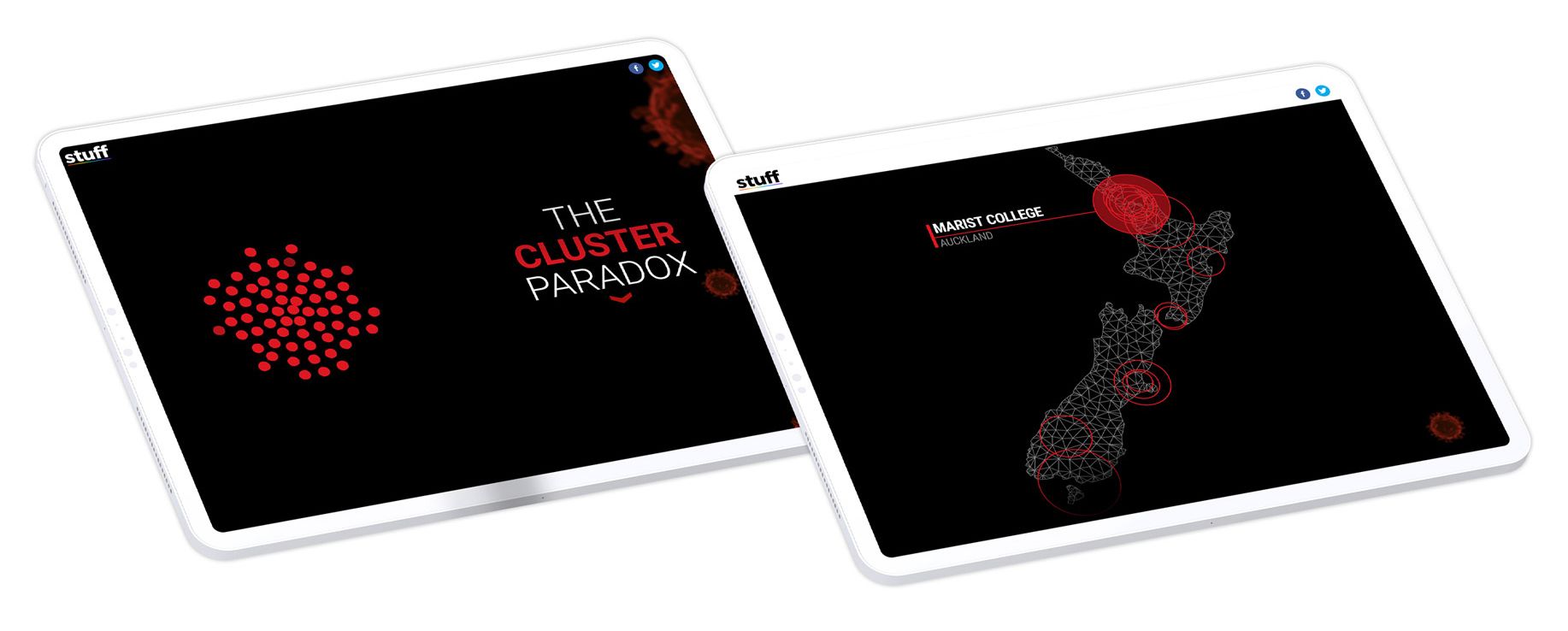The business case for digital storytelling

If you’re interested in pursuing digital storytelling for your organisation, you’ll need to build out your business case.
The point of a business case is to successfully budget for the resources you need to succeed at digital storytelling. These resources will include people costs — including FTE allocations and contractors — and technology costs.
The format of your business case will depend on the requirements of your organisation. Many larger organisations will have an official process for you to follow; others will have a more streamlined and informal process.
In this guide, we’re going to look at the case you need to make to get the resources to kickstart your digital storytelling. We’ll take it in three parts.
First, we’ll look at how you build a case for the strategic importance of digital storytelling. For nearly every organisation — profit or non-profit, government or business, education or brand — this core of this case is going to be the same.
Second, we’ll look at how you get others in your organisation on board. There’s no one-size-fits-all here, so you’ll need to make very specific, and very different, cases, depending on who you’re talking to.
Third, we’ll look at how to address key objections.
But first, let’s look at how to build a case for digital storytelling.
The one reason to pursue digital storytelling

There is only one good reason to pursue digital storytelling for your organisation: it is strategically imperative that you do so.
When developing a business case, then, the first thing you need to do — before any meetings and discussions — is to write down in plain language why this is the case for your organisation.
This will require you to shift your focus away from any specific product features. Instead, articulate how digital storytelling will power your content strategy, and how your content strategy will materially move the needle for the strategy of the overall business.
The best way to do this is connect content results with business results.
Content results
Content results are the metrics that matter to your content team. These are the metrics you report on, which you use to measure whether or not your content is a success.
The precise metrics you use will vary — but at a top level can include organic traffic trends, time-on-page, exit rates, click-through-rates, scroll depth, and more. Depending on your analytics set-up, you might also be doing more sophisticated funnel or conversion tracking.
Whatever your metrics, you’ll need to make a plausible, data-driven case that digital storytelling can improve the performance of your content team. The best way to do this is to use data from comparable organisations. To help you get started, we’ve included some snippets below. These link through to more detailed case studies on the use of digital storytelling platform Shorthand.
Honda
“Shorthand delivers amazing results for Honda. In our first year, our dwell time was up 85%, and the click-through rate was up 47%.”
Nick Bennet, Honda UK
RELX
Using Shorthand, RELX achieved a tenfold increase in reads for their internal communications — and saw employee Net Promoter Scores soar by 20 percentage points to record levels.
Read more.
Imperial College
After nine months with Shorthand, Imperial College London feature stories have seen 142% higher average unique pageviews and 50% higher average time on page.
Read more.
Business results
Business results are what the decision makers at your organisation actually care about. While they might pat you on the back for getting a 3% engagement boost on this or that content project, they’re much more interested in how content writ large is helping them achieve — or not — their wider strategic objectives.
After all, it’s these objectives that they report on, to the CEO and ultimately the Board itself. A successful business case will need to make a clear connection between ‘better content results’ and ‘better business results.’
The best way to do this is to be as explicit as possible. Get to know your organisation's strategic objectives inside and out. Once you know these objectives, you can more easily make the argument that it is strategically imperative to invest in getting better results from your content programme.
Selling digital storytelling internally

For most organisations, digital storytelling is a new way of producing and publishing content. For some, the benefits of digital storytelling — for your reputation, the performance of your content, and ultimately the results of your business — are going to be obvious. Others, though, are going to need a little more persuading.
Depending on the size of your organisation, there may be up to four distinct groups of people you need to persuade.
In this section, we’ll give you some tips on how to persuade and inspire your colleagues and collaborators, based on our extensive experience with helping teams get started with digital storytelling.
The business owner
The business owner is the person who will be ultimately responsible for rolling out digital storytelling at your company. Most likely, this person manages a content team, and will be reporting on the success of your content program to others in the company.
First and foremost, you'll want to show how digital storytelling will improve the metrics that your team reports on. While the business owner might be interested in visually stunning content, the performance metrics — such as time-on-page, conversions, and traffic — are their professional bread and butter. If the metrics look good, your team leader looks good.
The best way to get these metrics is to read case studies about other organisations. Gather as much data as you can, and use this data to make your case.
Second, you’ll want to give a sense of how much digital storytelling will cost. This will depend on what technology solution you choose, and ought to include some estimate of staff costs. Unlike Shorthand, some technology solutions will require designers or developers to use, which will increase the cost of digital storytelling considerably.
The business owner is the most important person to have in your corner. Without their sponsorship, there is no chance of a digital storytelling strategy getting off the ground. But once they are on board, there are a few other people you need to talk to.
The budget owner
The second critical person to have in your camp is the budget owner. This is typically a member of the senior management team — they may have "head of" in their job title, or something more senior, depending on how large your organisation is. This is the person who ultimately approves the procurement of a technology solution, and will be responsible for owning and signing off on the contract.
The budget owner is likely to have slightly different incentives and motivations than the business owner. While they are interested in seeing the performance of your content improve, they will also be interested in how digital storytelling — and improvements in content metrics — contribute to realising the strategic goals of your company.
As mentioned above, this will require you to connect improvements in the quality of your content with better outcomes for the business as a whole. While raw numbers remain important, this will ultimately require you to make a qualitative argument.
The budget owner, too, is going to be interested in the cost of your solution. Once you have established that better quality content will lead to better outcomes for business, you will need to run through various options for them to consider. We outlined your main options — a development platform, a design platform, a content team platform, and bespoke development — at the end of our short history to digital storytelling.
And, of course, once you've run through the options, you'll want to make a clear recommendation.
Once you have the budget owner and business owner convinced, you are well on the way to getting started with digital storytelling. But there are still a few more people you might have to convince.
Internal developers
If you have developers in your team who want to be involved in content production, then you have two options. First, you could pursue a digital storytelling solution that is highly dependent on input from developers. This may even lead to you developing your own bespoke solution.
The problem with a developer-centric solution, however, is that it is enormously expensive — both to build and maintain. Relying on developers for routine tasks also tends to slow down content production, with the ‘developer bottleneck’ becoming a common complaint.
Your second option is to outline how developer resource can be used more effectively in the content production process.
Instead of building and maintaining a bespoke technology stack, show how developers can be used to vastly improve the look and feel of digital stories.
While a no-code platform might give developers the impression that they have no role in the contemplation process, this is far from the case. Most no-code platforms are in fact code-optional. Using Shorthand, for example, non-developers can indeed create stunning content on their own — but developers can also add custom code to make content even better.
Reserving the use of developers for the most important value-adds — rather than requiring them to build content from the ground up — means that they can focus on the most rewarding engineering tasks in your content creation pipeline, and magnify their impact.
To help make this case, consider showing off some excellent digital stories that were built using code-optional platforms — such as this stunning story from New Zealand media company Stuff on the rise of coronavirus clusters.

Other team members
Finally, you are going to want to make the case for digital storytelling to your immediate colleagues. For some of your team, this will be an exciting change from the generic CMS they are used to using. For others, new technologies — and the new workflows that come with new technologies — will be threatening.
The best way to bring new team members on board is to show them the product itself. Give them a demo, and then invite them into your trial account. Show them plenty of example stories, and paint a picture of how your team can use digital storytelling to create even better content in the future.
As with the business owner and budget owner, show them how digital storytelling is going to improve the metrics that the team reports on. And, as always, treat objections seriously.
Speaking of objections, let’s take a look at what those main objections will be, and how to best combat them.
Addressing key objections

"It's too expensive"
There are two reasons why someone might have this objection to digital storytelling. The first reason is that there genuinely isn't room in the budget for a new technology product.
If this is your situation, you might need to wait for another financial year to roll around. But don’t despair! Keep detailed records of the research you have already done, and follow the progress of any technology platforms you are interested in. Most companies have a regular newsletter, which will include product updates. You can sign up to Shorthand’s newsletter here.
The second — far more common — reason is that someone simply doesn't see the value of digital storytelling.
To address this objection, we recommend three approaches:
1. Connect improvements in the quality of your content to broader business goals. To do this, pull data from relevant case studies — such as these case studies from Shorthand — and show how improvements in content metrics will help your organisation succeed.
2. Showcase the work of competitors. Content is an increasingly competitive space, and it’s becoming harder than ever to maintain results, let alone grow. As the quality of your competitors’ content improves, and you do nothing, the relative performance of your content is going to decline.
3. Detail the costs of in-house development and web design. If you are aiming to create content at scale, these costs will undoubtedly dwarf the costs of a subscription to a digital storytelling platform.
"We can build it in house"
Any company with in-house design and development resource is likely to face this objection. Typically, companies that go down this route fail to account for the true cost of developing and maintaining a bespoke technology product, and come to regret it later.
To address this objection, we recommend that you detail the costs of in-house development and design, as well as the ongoing costs of maintaining a bespoke technology product (it’s expensive!).
Sometimes, though, smaller capital expenditures (CAPEX) — such as new technology subscriptions — are harder to get across the line than reassigning operating budget — such as developers — that has already been committed.
If this is the case, we recommend showing how designers and web developers can be used to optimise content production. As we have argued earlier in this section, even so-called no-code platforms are, technically, code-optional.
Rather than build a bespoke product — or design and develop bespoke content on a case-by-case basis — your in-house team is much better (and more efficiently) utilised improving content on an existing platform.
"Our CMS can do it"
Most organisations pursue digital storytelling because they are not getting results from their generic CMS. However, IT teams sometimes argue that an existing CMS can, in fact, do the job. There are two responses to this objection.
First, you want to make sure that everyone is making an ‘apples to apples’ comparison. Digital storytelling platforms are specialist technologies, and many of the features you may want — such as the scroll-based animation effects used in some of the most celebrated digital stories — are unlikely to be easily implemented in a generic CMS, even one that has been customised.
Second, you will want to point out examples of content produced by your competition. If they are already producing immersive, interactive digital stories, then you are going to need a digital storytelling platform to catch up. And if they are producing content using their generic CMS, digital storytelling is an excellent and cost-effective way of winning a competitive advantage.
"We won't use it"
It's true: You shouldn't subscribe to a technology platform that you won't use. But if you have read the other sections in The definitive guide to digital storytelling, you will know that there are very good reasons why organisations are embracing a content strategy based on digital storytelling.
If you are facing this objection — or even thinking this yourself — it's worth spending some time fleshing out your content strategy, including a draft content calendar, and using this as concrete evidence of how the platform will be used.
The fact is, the most successful content teams in the world are also the most strategic. They have a content calendar planned well in advance, they know what they are producing, and why, and they are measuring results as they go. If you can make a concrete plan on how you are going to use your digital storytelling platform, then this objection should disappear.
In this section of the Definitive guide to digital storytelling, we outlined some of the trends driving the adoption of digital storytelling. In the next section, we’ll give you some actionable tips on how to succeed at digital storytelling.
